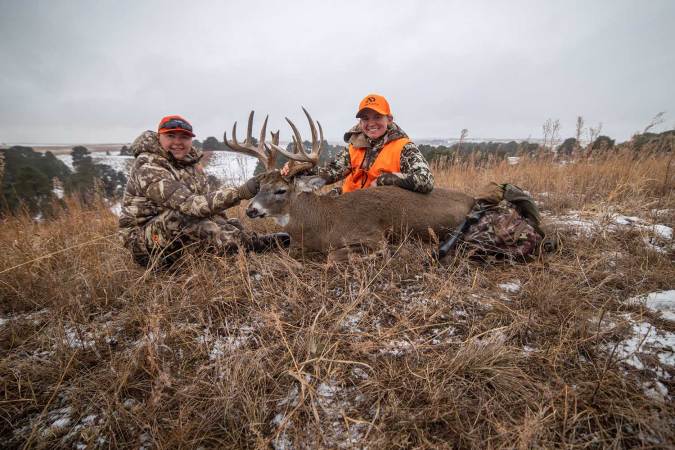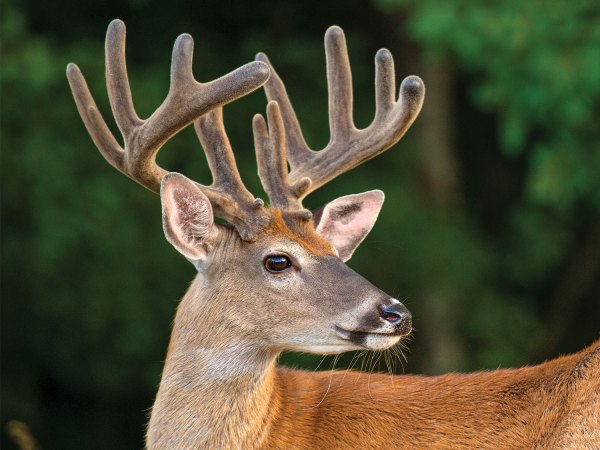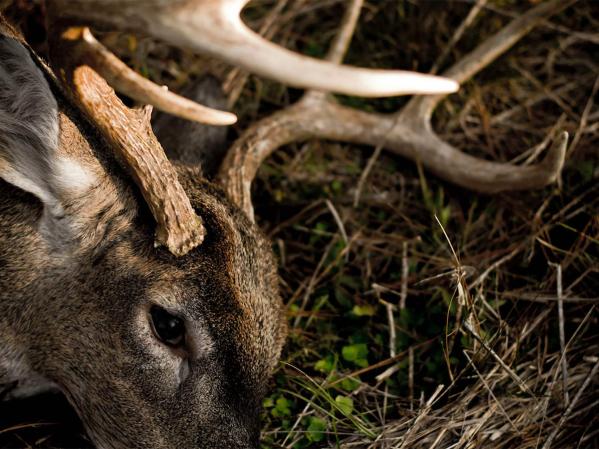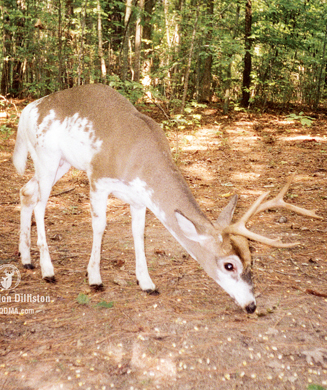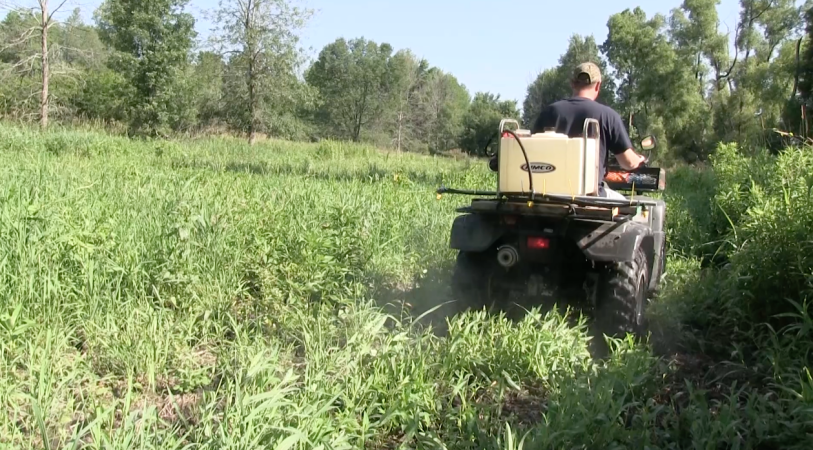You could drive yourself crazy trying to follow the latest trends (and all the hype) around food plots. But it’s really a lot simpler than it seems. Pick the right spot, plant the right seed, at the right time, and have realistic expectations. With that in mind, here are some of the most prevalent myths about planting food plots for deer and hunting over those plots—plus, an explanation on why these myths are total B.S.
1. You Have to Plant in the Spring
This is total hogwash. In fact, I seldom plant any of my food plots until around Labor Day weekend. Yes, you can do some spring planting but, for the most part, you’re better off planting fall-focused forages in late summer because unless you have a significant piece of acreage, the plot will be browsed out long before fall.
2. You Need a lot of Acreage to Grow Food Plots
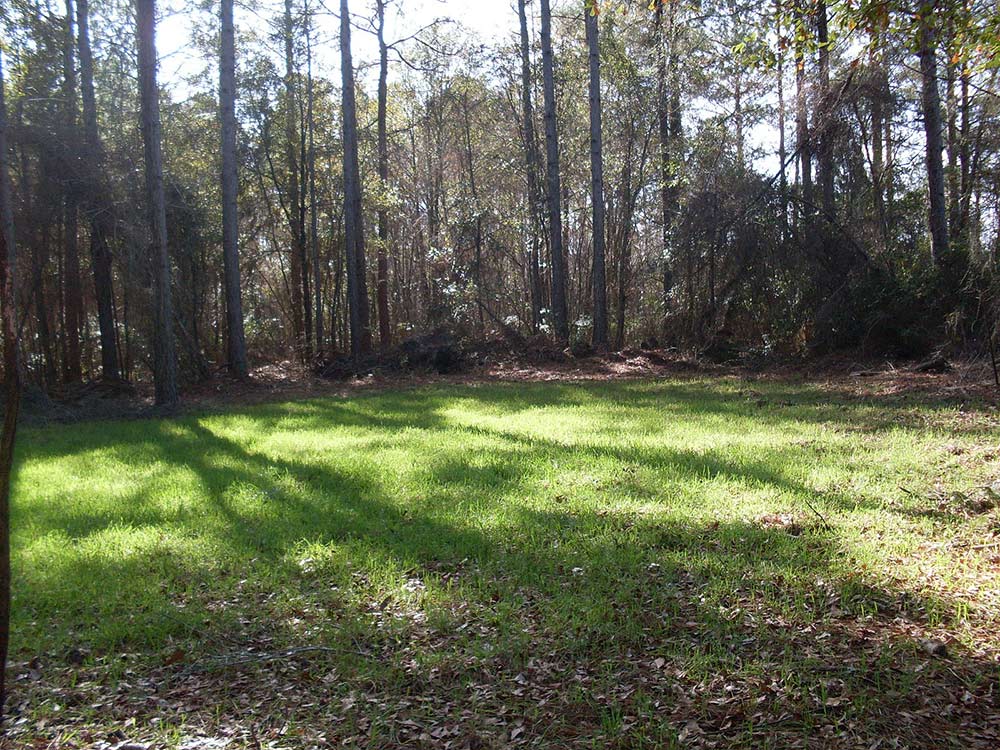
I own two pieces of land. One covers 17 acres, the other totals 7. I have food plots on each and both properties have been significantly improved because of it.
A ½-acre food plot can be tucked into just about any property and will produce enough attraction to make for a great hunting spot. No, you aren’t going to hold over entire herds of deer all year. But you can make yourself a fine little killing spot.
3. You Have to Plant Your Plot Only Once
Again, this is simply wrong. One of my favorite methods of plotting is the “one plot-three crops” approach. I’ll plant soybeans, oats, maybe some buckwheat in the spring. This will draw plenty of deer in the early summer months and they’ll mow it down pretty quick. Then I till it under and plant another round of oats, buckwheat and soys in mid-summer. Again, the deer will hit it hard and few, if any, of the soybeans will ever reach maturity. Then I till again and plant my fall-focused plot around Labor Day. All of the organic matter that I’m tilling under will build the soil and minimize my fertilizer costs and I’ll have a food plot in place much of the spring, summer and fall that will draw deer.
4. You Have to Plant One Type of Forage
I very seldom, if ever, plant any plot in a single type of forage. In fact, I seldom plant an entire plot in one forage blend. For example, in my primary plot of 1.5 acres, I’ll plant a brassica blend in the center ringed with a mix of oats, soybeans and radishes. The oats and soybeans will draw deer in early October while the brassica tops will come into their own in November. Then, when winter hits, the radishes will have drawing power along with the bulbs of the turnips from the brassica mix.
5. You Need a Weed-Free Plot
Yes, you should use an herbicide to kill unwanted weeds prior to planting. Less competition for water and nutrients makes for more forage and a more successful plot. But you aren’t planting your plot for maximum yield. A few weeds aren’t going to hurt anything.
6. You Need Great Dirt for a Great Plot

My buddy Grant Simpson has an awesome piece of river-bottom property not far from where I live. His food plots draw deer for miles. And those plots are planted in sand…beach-like sand. See, Grant sells seed for a living. He grew up on a farm and understands plenty about putting seed in the ground and making it grow. There is no soil so bad that it can’t grow a respectable plot. You simply need to understand how seeds grow, adjust the soil, apply the right fertilizer in the right amount and you’ll have a great food plot. To do that, seek professional help. County extension offices are the place to start.
7. Food Plots are Expensive
Sure, they can be. But they don’t have to be. I don’t spend much on my plots. Seed is much less expensive than fertilizer. So I always try to plant something in the spring, or allow my plots to get plenty weedy from natural growth. Then about two weeks before I want to plant my plot for the fall hunting season, I’ll disc all that foliage under and allow it to provide my soil with free fertilizer. If you need to kill unwanted weeds, opt for generic glyphosate from the farm store rather than a name brand. It’s the same chemical. Pay attention to the labels. Seed blends with celebrity hunters look pretty on the shelves and likely contain the exact seed you can buy in bulk at your local elevator for less than half the price.
8. Fire is Bad
Nonsense. Fires that aren’t controlled are bad. But a good, controlled burn can work wonders for your food plot. As mentioned, I’ll allow my food plots to fill with weeds each spring if I’m not doing a spring planting. Some years, I’ll simply till those weeds under. Others, I’ll hit them with glyphosate and burn them off once they’re good and dead. Burning is a great way to clear a plot and it can also help add some valuable minerals to the soil. If you’re looking to rekindle an area of native grasses and create awesome, thick cover, a controlled burn is your best friend.
9. Food Plots are Magic

Hardly. A well-designed food plot can, indeed, create some outstanding hunting opportunities. But you can’t simply clear a patch of dirt, sprinkle out some “throw and grow” seed and expect giant bucks to pop out of the ground. Food plots require plenty of planning, strategy and hard work.
10. You Need a lot of Equipment

I own a 1950s era Allis-Chalmers tractor that I paid $1,200 for. It’s paired with a 5-foot disc I got at an auction for $200. I pair that with a $100 ATV-mounted sprayer. That’s my food plot arsenal. That’s all of it. When I first started creating plots, I didn’t even have the tractor. I did them all using just the ATV sprayer and a heavy harrow drag pulled behind my second-hand ATV. I’ve planted food plots many times using just a handheld sprayer and a metal rake. Equipment is nice. It makes hard work a bit easier. But is it necessary? Absolutely not.
The One Seed You Should Always Sow
Weather plays a direct role in the success or failure of every food plot you’ll ever plant. Failing to plant in a suitable weather window may see all of your time, effort and expense blow away like the dust in a drought-stricken field. Even if you luck out with ideal growing conditions each and every year you sow a plot, you’re still going to expend a fair bit of resources (including time and money) on the process.
But what if you could plant a plot once and enjoy the benefits of that forage that same season…and for several seasons to come without planting that plot again.
You can. The secret ingredient is clover.
No matter what type of forage I’m planting, I add a clover blend to the seeder every time. I’ll add it to a brassica blend. I add it when doing a spring “mow-down” mix of soybeans and corn. I’ve added it to radishes and to buckwheat.
That clover serves two purposes, depending on my long-term intentions for the food plot. If I want to sow the plot year after year in something like a brassica/cereal grain blend, the clover will serve as a “green manure” fertilizer. When planted during the previous spring or late-summer with another forage, the clover will come back lush, full and green the following spring. When I’m ready to plant my fall plots, I simply disc all that clover under. This adds organic matter to the soil and the clover releases beneficial nitrogen as it decays.
If I choose not to plant the plot the following year—or weather conditions make it tough to plant—I simply mow, fertilize, and maintain the clover. I’ll have a terrific green food source without having to plant anything new. And that plot will continue to produce for several years before needing to be reseeded.






